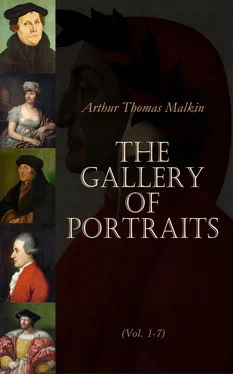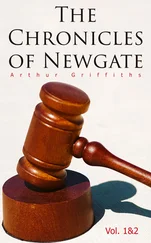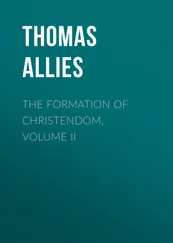The management of the see was often committed to the care of Copernicus during the absence of his uncle, who on political grounds resided for the most part at the Court; and his activity in maintaining the rights of the chapter rendered him especially obnoxious to the Teutonic Order. In one of the short intervals of tranquillity, they took occasion to cite him before the meeting of the States at Posen, on account of some of his reports to his uncle concerning their encroachments. Gassendi, who mentions this circumstance, merely adds that at length his own and his uncle’s merit secured the latter in the possession of his dignity. In 1512 Watzelrode died, and Copernicus was chosen as administrator of the see until the appointment of the new bishop, Fabian von Losingen. In 1518 the knights under their grand master, Albert of Brandenburg, took possession of Frauenburg and burnt it to the ground.
During the following year hostilities continued in the immediate neighbourhood of Frauenburg, but in the course of that summer, negotiations for peace between the Teutonic Order and the King of Poland were begun, through the mediation of the bishop. At last a truce was agreed upon for four years, during which Fabian von Losingen died, and Copernicus was again chosen administrator of the bishopric. In 1525 peace was concluded with the Teutonic Knights, Albert having consented to receive Prussia as a temporal fief from the King of Poland. It was probably on this occasion that Copernicus was selected to represent the chapter of Ermeland at the Diet at Graudenz, where the terms of peace were finally settled; and by his firmness the chapter recovered great part of the possessions which had been endangered during the war. This service to his chapter was followed by another of more widely extended importance. During the struggle, which had continued with little interruption for more than half a century, the currency had become greatly debased and depreciated; and one of the most important subjects of deliberation at the meeting at Graudenz related to the best method of restoring it. There was a great difference of opinion whether the intended new coinage should be struck according to the old value of the currency, or according to that to which it had fallen in consequence of its adulteration. To assist in the settlement of this important question, Copernicus drew up a table of the relative value of the coins, then in circulation throughout the country. He presented this to the States, accompanied by a memoir on the same subject, an extract from which may be seen in Hartknoch’s History of Prussia. Throughout the troublesome period of which we have just given an outline, Copernicus seems to have displayed much political courage and talent. When tranquillity was at length restored, he resumed the astronomical studies which had been thus interrupted by more active duties.
There appears to be little doubt that the philosopher began to meditate on the ideas which led him to the true knowledge of the constitution of the solar system, at least as early as 1507. Every one, who has heard the name of Copernicus mentioned, is aware that before him the general belief was, that the earth occupies the centre of the universe; that the changes of day and night are produced by the rapid revolution of the heavens, such as our senses erroneously lead us to believe, until more accurate and complicated observation teaches us the contrary; that the change of seasons and apparent motions of the planetary bodies are caused by the revolution of the sun and planets from west to east round the earth, in orbits of various complexity, subject to the common daily motion of all from east to west.
Instead of the daily motion of the heavens from east to west, Copernicus substituted the revolution of the earth itself from west to east. He explained the other phenomena of the planetary motions by supposing the sun to be fixed, and the earth and other planets to revolve about him; not, however, in simple circular orbits, according to the popular view of the Copernican theory. It was absolutely necessary to retain much of the old machinery of deferent and epicycle so long as the prejudice existed, from which Copernicus himself was not free, that nothing but circular motion is to be found in the heavens. Another step was made by the following generation, and astronomers were taught by Kepler to believe that the circular motion which they were so anxious to preserve in their theories, has no real existence in the planetary orbits. The advantage of the new system above the old, was, that by not denying to the earth the motion which it really possesses, the author had to invent epicycles to explain only the real irregularities of the motions of the other planets, and not those apparent ones which arise out of the motion of the orb from which they are viewed.
It is commonly said that besides the two motions already mentioned, Copernicus attributed to the earth a third annual revolution on its axis. This was necessary from the idea which he had formed of its motion in its orbit. He conceived the earth to be carried round as if resting on a lever centred in the sun, which would cause the poles of the daily motion to point successively to different parts of the heavens; the third motion was added to restore these poles to their true position in every part of the orbit. It was afterwards seen that these two annual motions might be considered as resulting from one of a different kind, and in this simpler form they are now always considered by astronomical writers.
It would be an interesting inquiry to follow Copernicus through the train of reasoning which induced him to venture upon these changes; but it is impossible to attempt this, or to explain his system, within the limits to which this sketch is necessarily confined. In one point of view, his peculiar merit appears not to be in general sufficiently insisted upon. If he had merely suggested the principles of his new theory, he would doubtless have acquired, as now, the glory of lighting upon the true order of the solar system, and of founding thereupon a new school of astronomy: but his peculiar and characteristic merit, that by which he really earned his reputation, and which entitles him to take rank by the side of Newton in the history of astronomy, was the result of his conviction, that if his principles were indeed true, they would be verified by the examination of details, and the persevering resolution with which he thereupon set himself to rebuild an astronomical theory from the foundation. This was the reason, at least as much as the fear of incurring censure, why he delayed the publication of his system for thirty-six years. During the greater part of that time he was employed in collecting, by careful observation, the materials of which it is constructed: the opinions on which it is based, comprising the whole of what was afterwards declared to be heretical and impious, were widely known to be entertained by him long before the work itself appeared. He delayed to announce them formally, until he was able at the same time to show that they were not random guesses, taken up from a mere affectation of novelty; but that with their assistance he had compiled tables of the planetary motions, which were immediately acknowledged even by those whose minds revolted most against the means by which they were obtained, to be far more correct than any which till then had appeared.
Copernicus’s book seems to have been nearly completed in 1536, which is the date of a letter addressed to him by Cardinal Schonberg, prefixed to the work. So far at this time was the church of Rome from having decided on the line of stubborn opposition to the new opinions, which, in the following century, so much to her own disgrace, she adopted, that Copernicus was chiefly moved to complete and publish his work by the solicitations of this cardinal, and of Tindemann Giese, the bishop of Culm; and the book itself was dedicated to Pope Paul III. It is entitled, ‘De Revolutionibus Orbium Cœlestium, Libri VI.’ The dedication is written in a very different strain from that to which his followers were soon afterwards restricted. He there boldly avows his expectation that his theory would be attacked as contrary to the Scriptures, and his contempt of such ill-considered judgment. A more timid preface, in which the new theory is spoken of as a mere mathematical hypothesis, was added to this dedication by Osiander, to whom Copernicus had entrusted the care of preparing the book for publication. It has been said that the author was far from approving this, and if his death had not followed closely upon its publication, it is not improbable that he would have suppressed it.
Читать дальше












